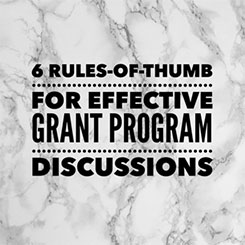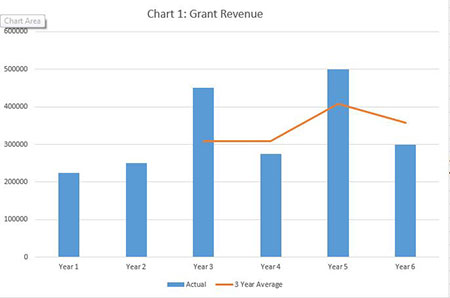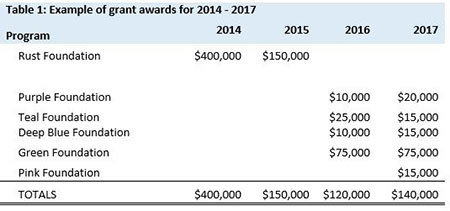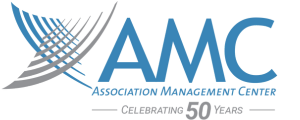
6 Rules-Of-Thumb for Effective Grant Program Discussions
A common conversation among grant professionals is about how to set expectations and measure success of grant programs. Many stakeholders (the boss, the board, the committees) often want to talk about revenue as a measure of success and usually focus on increasing revenue. While a meaningful metric, increasing revenue is not always the most reflective of success or impact of the program. Over-the-years, I have come up with a few rules-of-thumb that help frame the conversation in a better way.
Embarrassingly, in the past when asked about grant revenue, I’d slip into robotic autopilot and start babbling about multi-year grants, generally accepted accounting principles, and recognizing revenue. Then everyone’s eyes would start to glaze over and I never actually answered their question or adequately defended my recommendation on realistic expectations. I knew they wanted a short answer and I would get flustered at not being able to give the succinct answer they were looking for. The odd thing is I couldn’t tell the story of my own work, even though it’s what I did every day when writing grant proposals and reports for other programs.
However, experience has served me well and my rules-of-thumb help tell the story, navigate the questions, and explain budget recommendations. (Still working on getting it succinct.) While not original, the rules guide me and help the stakeholders (the boss, the board, the committees) understand the goals of the grant program. To clarify, this is a way to have open conversations about the world of grants and revenue, not definitive rules about how to measure success.
Rule of Thumb #1 – Pick one reporting timeframe and stick to it.
The grant universe works across many time frames – calendar year, fiscal year, program timelines, and grant cycle calendar. Pick your reporting calendar and timeframe and stick with it. I like to report the grant revenue in the fiscal year it was awarded/pledged (Table 1). This also makes tracking success over multiple years much easier because the time frame is consistent. There are other times to talk about cash flow and spending, but for the heuristic of measuring success or setting expected revenue, this method has worked for me.
Rule of Thumb #2 – Recognize multi-year grants in the year that they were awarded.
People have a hard time with multi-year grants. When I have been talked into distributing funds of big, multi-year pledges over time, it has always come back to bite me because people forget it was a one-time, big pledge. It’s better to teach how multi-year grants work and alert stakeholders to the fact that funding will end and preparation for future funding is needed. I add footnotes to reports to explain distribution of funds, because it’s important for budget planning.
Rule of Thumb #3 – Use a 3 – 5 year average when reporting annual grant revenue.
If you have stuck to rules # 1 and #2, this will make total sense because reporting an average over several years will even out the bumps in the revenue stream that multi-year or one-off project grants may cause. It’s a great conversation starter and will support expected revenue recommendations. I often show a chart with annual revenue, with a secondary line showing average revenue growth over time (Chart 1). By looking at the graph line, one can see that over time, between Year 3 and Year 6, the average has increased from $300k to $350k. This helps illustrate a realistic picture of how annual funding fits into funding and growth over time.

Rule of Thumb #4 – Always show grantor/funding diversity.
Highlighting the number of unique organizations that provided grants is very important! I think we all know this, but it sometimes gets left out of the conversation when talking about grant program metrics. The table below provides a classic example of an enthusiastic grantor willing to help launch a new program. But their commitment was limited. While the funding dropped from $400,000 in 2014 to $140,000 in 2017, the success is demonstrated by the increased numbers of grantors who bought in later down the road. This sets the stage for long-term success, even if revenue wasn’t as high (not as much was needed after the program was launched). The number of grantors increased, balancing out changes in funding from other grantors. So, as part of your story, you can demonstrate the success of diversifying your revenue stream to maintain the program activities, even if the revenue dropped.

Rule of Thumb #5 – Don’t get caught up in submission-to-award ratios.
Using the percentage of grants awarded to grants submitted is great for setting strategy and process improvement activities, but rarely defines the success of your grant program. The metric should not be used in isolation, mostly because there are multiple reasons grant proposals get declined and it requires deeper analysis to get to the main reason grants are not funded.
Furthermore, the acceptable percentage of awarded grant varies based on goals. For example, if I am working with a new client who doesn’t have any established relationship with funders, my percentage of awards to submissions will be much lower than an organization that has well established relationships.
Rule-of-Thumb #6 – Include a metric on the impact on mission.
The most important metric is the positive impact on the people served by your organization. A $1,000 grant might not be a huge number in terms of revenue, but if it pays for bus passes to ensure that individuals in a job training program can get to work – it has a powerful impact. And that is the most important part of the story.
While the conversations are not always easy, it is the opportunity, as a grant professional, to share expertise and recognize intuition based on experience. I know that uncomfortableness in “realigning” expectations and I still am prone to babbling, but I always come to the table with my data related to the 6 rules-of-thumb to back up my story. These simple heuristics have helped guide me through the necessary conversations for data driven decision making, setting strategies, and reducing the uncomfortable babbling. (Still working on succinct.)
Be the first to know about the latest news and events from AMC. Sign up for our bimonthly emails!


